Horizontal cotoneaster and its cultivation
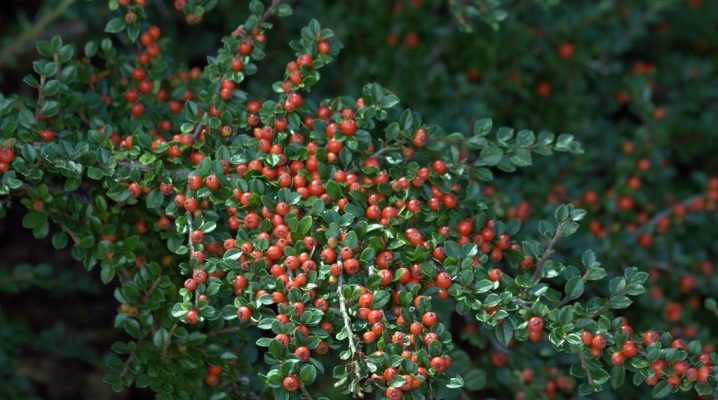
The cotoneaster is one of the shrubs used to decorate plots. A perennial plant does not require much maintenance and retains its attractiveness for a very long time. It is because of this that many gardeners love him.
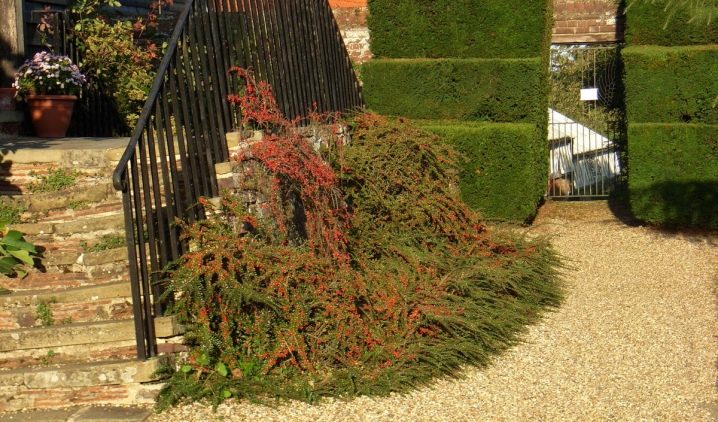
general description
The horizontal cotoneaster is an exclusively ornamental plant. Many people confuse it with dogwood, in which the berries are edible. But these are completely different bushes and you cannot eat the fruits of the cotoneaster. They are not poisonous, but they will not bring any benefit to the human body.
This plant belongs to the family Rosaceae... It is most common in warm regions of Asia. But there are also shrubs with increased frost resistance. They can be grown in regions with cold winters. The cotoneaster grows well both in the sun and in the shade. He hardly gets sick and is not attacked by pests.

The plant reproduces very quickly. Therefore, you can make a beautiful hedge out of it without any problems.
In height, the creeping shrub grows up to 50-60 centimeters. Shoots are arranged symmetrically on it. They are covered with small green shoots. The leaves of such a plant are small. They are green in summer and red in autumn, with a slight creamy border.
The horizontal cotoneaster blooms at the very beginning of May. Flowering lasts 20-25 days. His flowers are small and reddish. But there are also varieties with lighter buds. In autumn, bright scarlet berries appear in place of flowers. They stay on the bush for the whole winter. Thanks to this, it looks like a Christmas tree decorated with New Year's garlands.
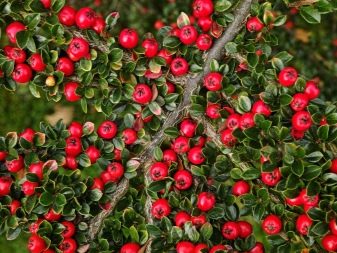
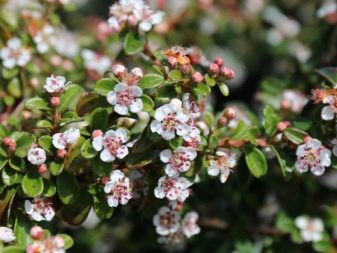
Popular varieties
There are several of the most common varieties of horizontal cotoneaster.
"Variegatus"
This bush grows up to 30 centimeters high. Its shoots are creeping and long. In warm regions, the plant remains green even with the arrival of cold weather. In the cold part of the country, the shrub sheds its foliage in autumn. The cotoneaster blooms in May. His flowers are pale pink. In the fall, spherical fruits of a red hue appear in their place.
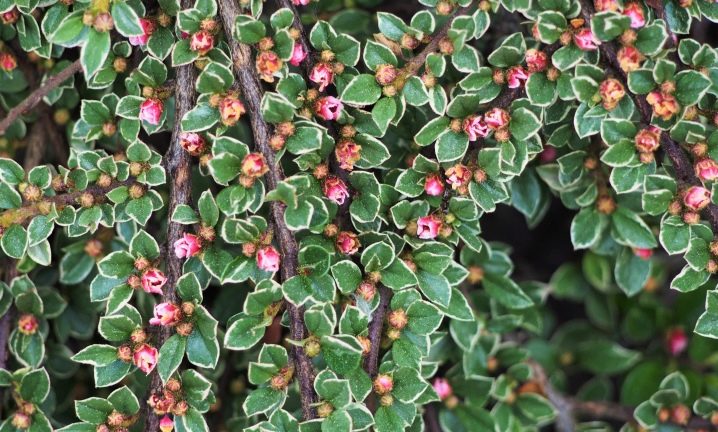
"Ursinov"
This type of cotoneaster is hybrid... The crown of such a shrub is spreading and very beautiful. The plant grows very quickly, capturing new territories. Its flowers are light and inconspicuous, but the fruits are bright. In shape and color, they resemble rowan berries. The fruits of this variety of cotoneaster attract the attention of many birds.
Such plants can be planted not only outdoors, but also in tubs or bowls. The main thing is to choose a sufficiently large container for disembarkation. In this case, the cotoneaster can even be used to decorate a balcony or terrace.
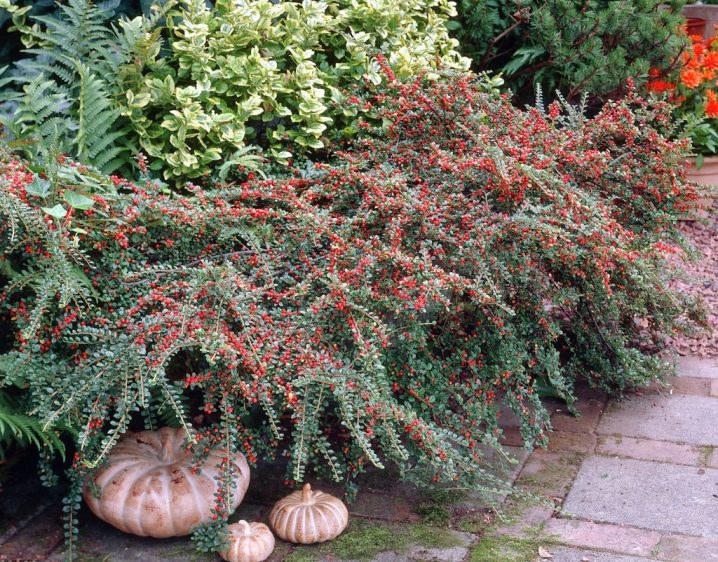
"Perpusillis"
The spreading shrub has a slow growth rate. The diameter of its crown can be up to a meter. The plant grows to a height of 30 centimeters. Its foliage is dense and fleshy. In autumn, the leaves turn crimson. At the same time, large fruits appear on the bush.
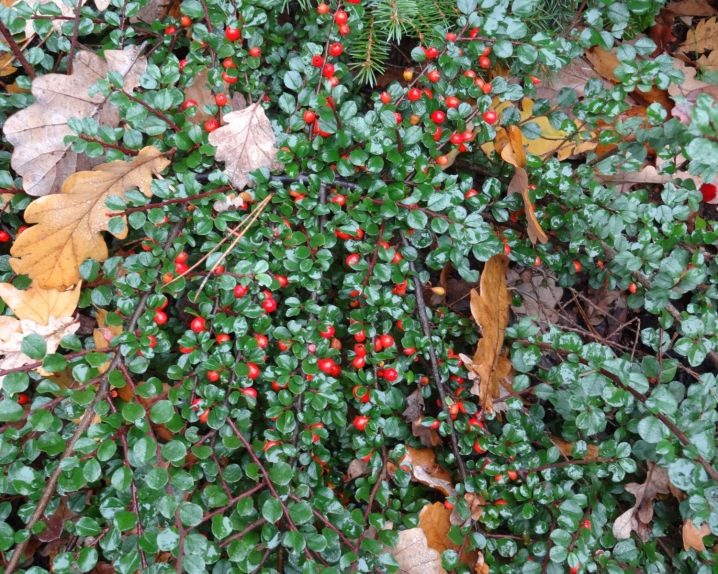
"Coral extravaganza"
This type of cotoneaster is the most popular among landscape designers. A variegated shrub with vibrant coral berries, ideal for rocky gardens. In addition, bushes are often used to fortify slopes.
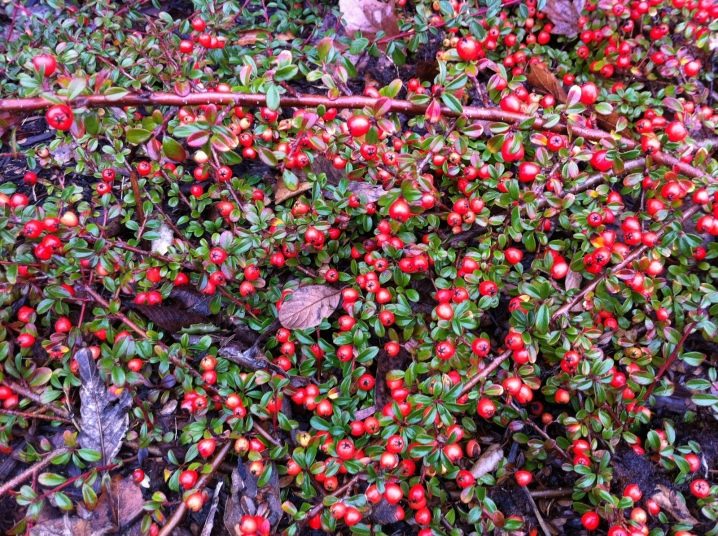
The plant is light-requiring.Therefore, it must be planted in sunny areas. For the winter, the bushes must be covered with dry foliage or spruce branches. This helps protect them from freezing.
Landing
Like other deciduous crops, the cotoneaster is planted on the site in the spring. In the southern regions, planting can be done in the fall. This is usually done at the end of October. You can plant a horizontal cotoneaster both in open sunny areas and in partial shade. In any case, the plant will look spectacular.
You can not plant a shrub only in those places where rain and melt water constantly stagnate. Excess moisture will very quickly lead to root rot.
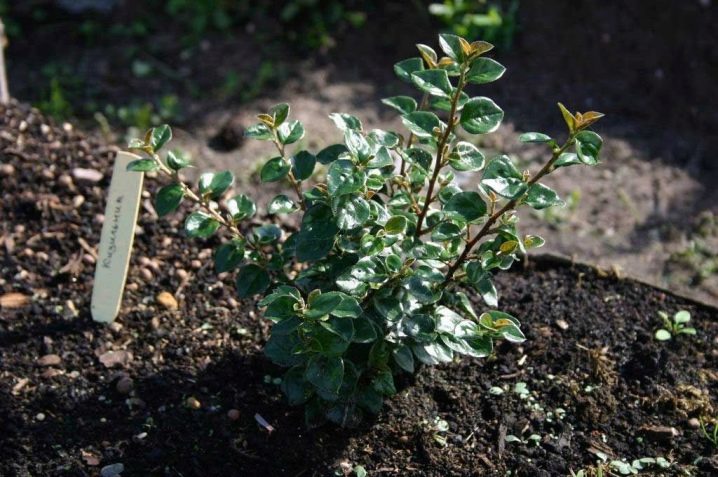
When planting a culture, it is worth remembering that it is sensitive to soil quality and composition. The soil on the site should be nutritious and loose. To improve the quality, sand and peat compost are mixed into the soil, mixed in a ratio of 2 to 1. If the soil on the site is too acidic, it is also worth adding a small amount of lime to it.

It is recommended to buy cotoneaster seedlings in proven nurseries. Plants must be healthy and strong. When buying, it is important to inspect the rhizome. It must be free of rot or mold.
The process of planting a horizontal cotoneaster itself consists of the following steps.
- Hole preparation... First, you need to dig holes in the selected area. The depth of each of them should be within 90 centimeters. The distance between individual holes must be at least one and a half meters. If you plan to plant a hedge, the seedlings can be placed closer to each other.
- Drainage layer formation... To prevent plant roots from rotting, a drainage layer must be laid at the bottom of the hole. For this purpose, you can use pieces of broken brick, pebbles or expanded clay. From above, the drainage layer is covered with nutrient soil.
- Planting seedlings... Young plants need to be planted in a pit. The root collar of the plant should be located above the ground level. Sprinkle the roots of the plant with nutritious soil. The soil should be slightly compacted.
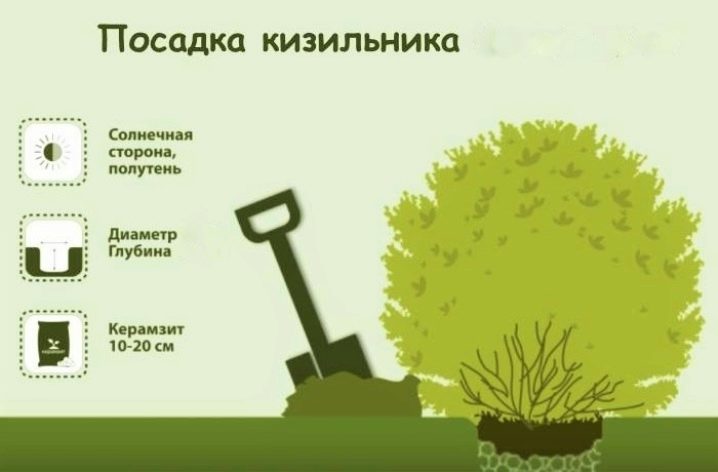
Immediately after planting, the plants must be well watered with settled water. Next, the cotoneaster needs to be mulched. Peat is usually used for this purpose.
Care
Cotoneaster growing outdoors is easy to care for.
- Watering... The shrub is a drought tolerant plant. Therefore, he may well do without watering for a long time. In dry weather, the bushes are watered no more than 1-2 times a month. Watering one adult plant takes no more than a bucket of water. The next day after watering, the soil on the site is loosened. It is also important to get rid of all weeds during the weeding process.
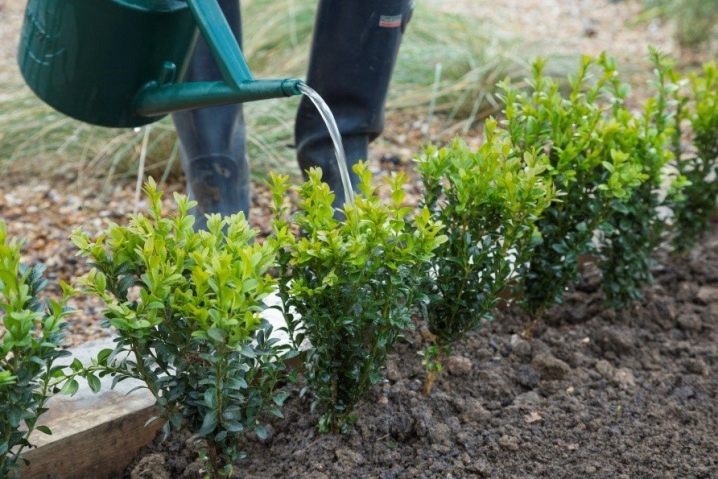
- Top dressing... You do not need to fertilize the soil on an ongoing basis. As a rule, plants are fed only in spring. At this time, a urea solution is introduced into the soil. If there is no desire to use chemicals on the site, the product can be replaced with organic fertilizers with a high nitrogen content. After all, it is this element that plants need to grow greenery.
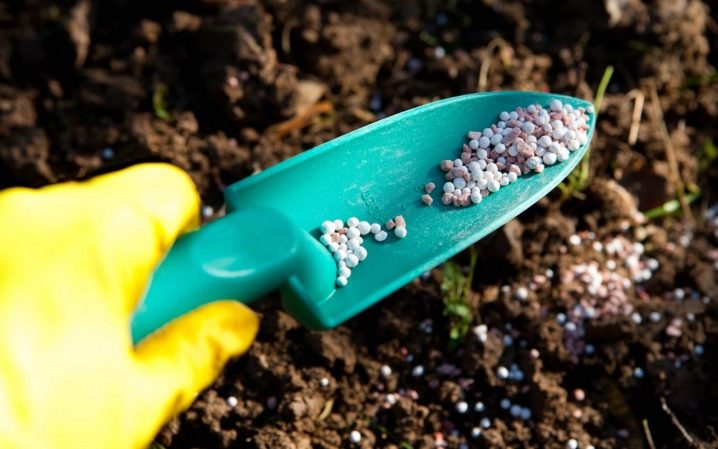
- Pruning... Growing a perennial shrub involves cutting the plant regularly. The flower tolerates it very well. Throughout the season, the plant is pruned three times. For the first time, gardeners cut shrubs in the spring. At this time, it is necessary to form the crown of the plant. At the same time, all broken and diseased branches are removed. In summer, gardeners only carry out sanitary pruning. Shrubs need it in cases where the plant is sick or suffers from pest attacks. Sanitary pruning usually does not affect the appearance of a cotoneaster growing on a trunk or outdoors. In the fall, the shrub is examined again and cleaned of damaged and old branches.
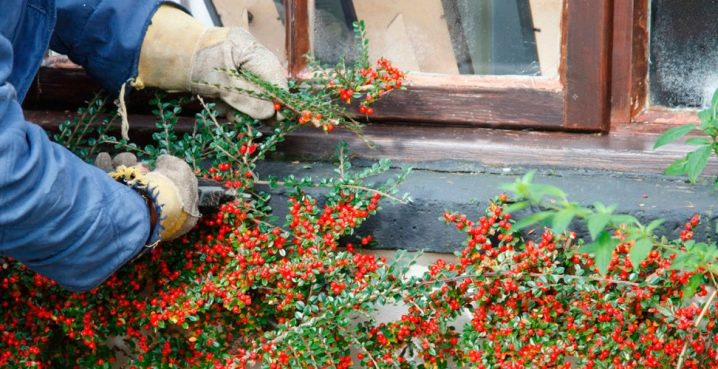
Sharp and decontaminated tools are always used for trimming.
- Wintering... To make the plant feel good in winter, the shrub is covered in advance. This procedure is very important for residents of cold regions.The process of preparing a plant for winter begins with mulching the trunk circle. For this, peat is used. After that, the branches are bent to the ground and fixed with metal pins. Further, the plants are covered with spruce branches, foliage or agrofibre. Under such a shelter, the plant is able to survive even prolonged frosts.
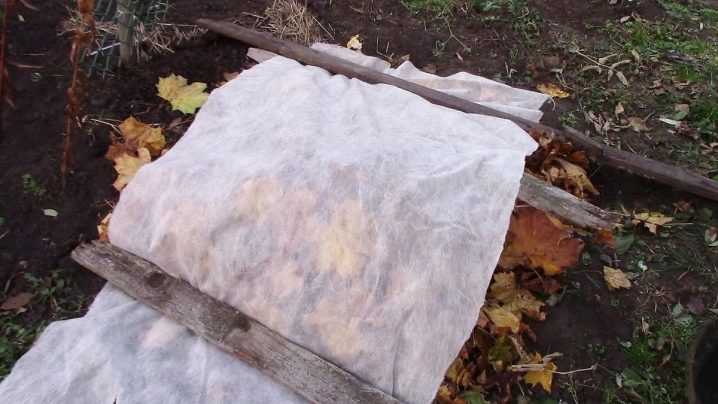
- Transfer... Even if the shrub grows in ideal conditions, it may need replanting after a while. This procedure is best done in June. The day before transplanting, the soil should be watered with warm water. The next morning, the plant is transplanted to a new site. The transplanting process is no different from the shrub planting procedure.
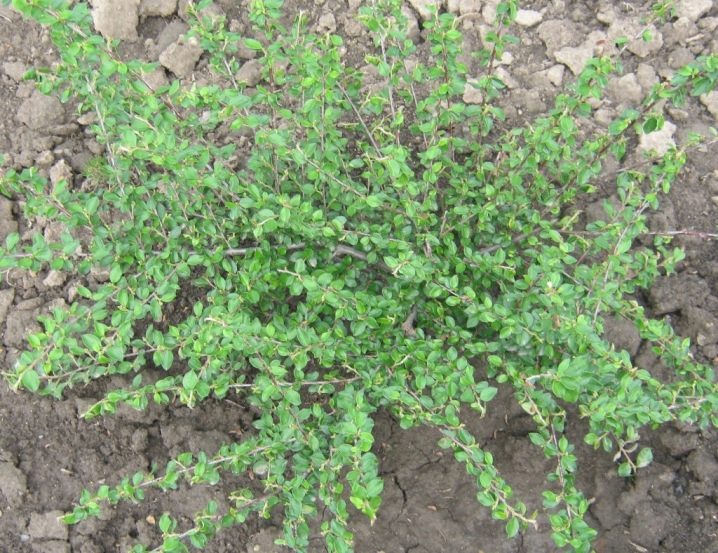
Thanks to this care, the plant will delight the owners of the site for a very long time with its attractive appearance.
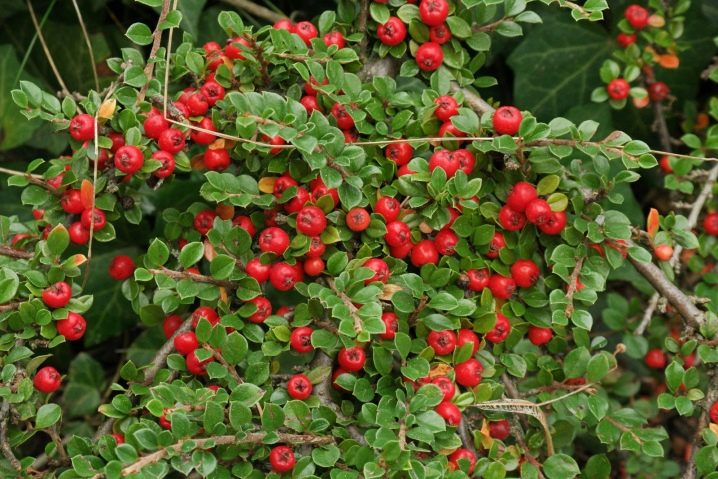
Reproduction
There are three main ways to propagate a horizontal cotoneaster. Each of them has its own characteristics.
Seeds
Gardeners use this method least often. The fact is that cotoneaster seeds have a rather poor germination capacity.... But if you want, you can try to propagate plants in this way. Planting material is harvested in early October.
Next, the fruits are peeled. Seeds selected from the pulp are dipped in a container with water. For planting, viable specimens are used that sank to the bottom. Seeds that float to the surface are thrown away.
The material selected for planting is sown in the dug up and carefully loosened soil. In winter, the grains undergo natural stratification. After that, in the spring, the first shoots appear on the site. If there are too many young shoots on the site, they must be thinned out.
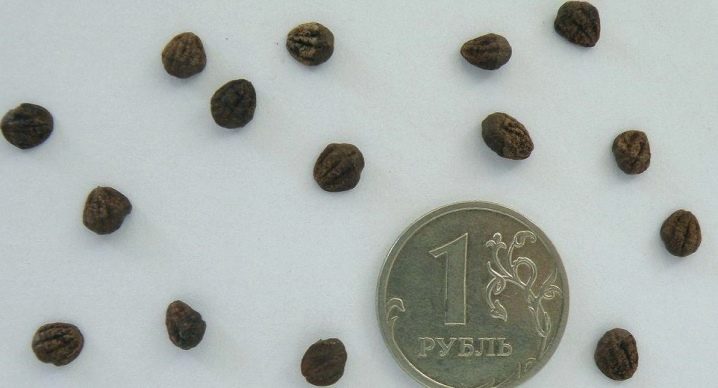
Taking care of young seedlings is easy enough. The beds need to be watered and weed regularly. After 2-3 years, the grown plants can be transplanted to a new place.
Cuttings
This breeding method is the most popular among gardeners. Annual shoots are used as planting material. Cuttings are cut at the very beginning of summer. For a day, the branches are left in water with "Kornevin" or similar preparations.
The next day, the cuttings need to be rooted in containers with a nutrient substrate. For its preparation, coarse sand and peat are mixed in equal proportions. The stalk is covered with a cut-necked bottle or transparent film. The shelter will need to be removed from time to time in the future.
You can transplant plants to a permanent place in early spring. At this time, they will already be strong and able to adapt to any conditions.

Layers
Like grafting, this procedure helps guaranteed to get a new healthy plant. It is very easy to propagate a shrub in this way. Healthy shoots of an adult bush must be bent to the surface of the ground and carefully pinned. The attachment point should be located at a distance of 18-20 centimeters from the top of the branch.
For reliability, shoots can not only be pinned, but laid in trenches dug in advance and sprinkled on top with a mixture of peat and sand. Layers in this form are left until next spring.
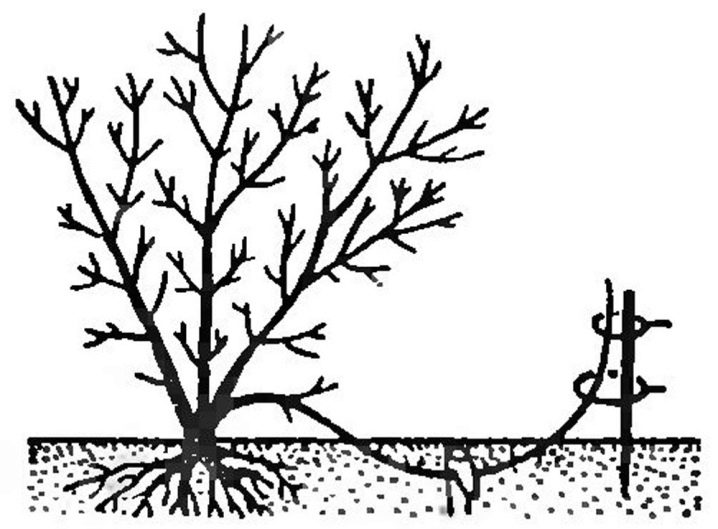
After that, the rooted young shoots can be separated from the mother plants and transplanted to a new place. The cotoneaster takes root quickly enough.
Diseases and pests
The cotoneaster is considered a plant with a very strong immune system. Therefore, it is very rarely sick. If the weather is rainy, the plant may be affected by Fusarium. Fighting this disease is quite simple. The affected parts of the plant must be carefully trimmed and destroyed. After this procedure, the bush is sprayed with a solution of Bordeaux liquid. The same product can also be used as a prophylactic agent.
The following pests are also dangerous for the horizontal cotoneaster.
- Apple aphid. As a result of the activity of these insects, the foliage on the bush is deformed. Shoots begin to curl. These insects live in colonies.Therefore, it is quite easy to notice them on the surface of the plant.
- Fruit moth. Insects damage the foliage of the bush in the first half of summer. Over time, the leaves fall off, and the bush begins to look less beautiful than before.


If there are not very many pests on the site, the shrub is treated with folk remedies. Tobacco infusions and soap solutions help well in the fight against insects. To completely get rid of pests, the shrub must be treated with the selected tool in several stages.
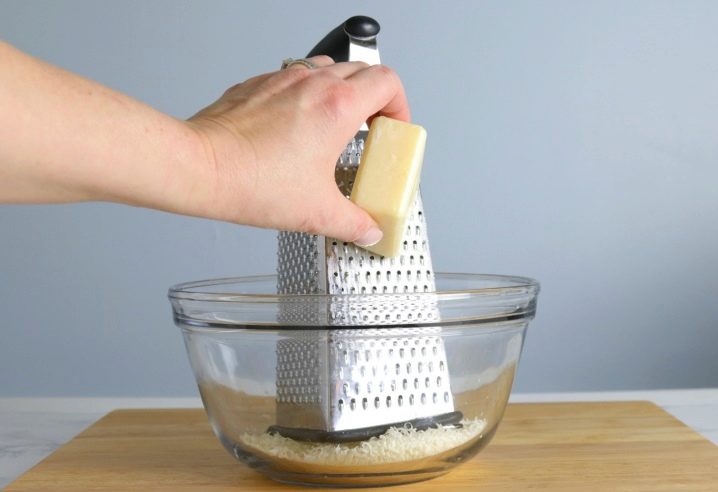
The break between these procedures should be within 4-5 days.
If folk remedies do not help much, the bushes must be treated with proven insecticides. They can be used at any time of the year, because the fruits of this plant are not used for food. You need to work with insecticides carefully. The preparations are diluted in water according to the instructions. The treatment is carried out in a mask and rubber gloves.

Application in landscape design
There are several ways to use a horizontal cotoneaster. Most often, the plant is planted along fences and walls. A bright hedge looks very beautiful and helps to hide the area or part of it from prying eyes. When creating a hedge, the plant is often combined with dwarf conifers.
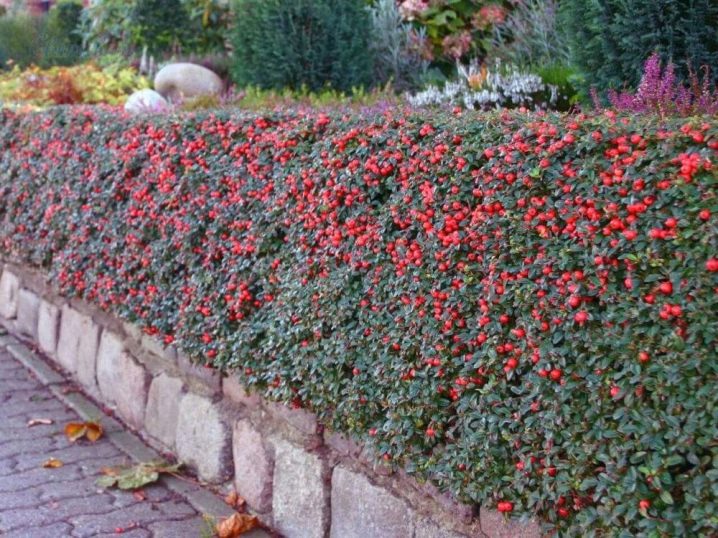
Often, the bush is planted on an alpine hill. It goes well with low flowers. In rocky gardens, the cotoneaster is planted as a tapeworm. Compositions created using a decorative cotoneaster look spectacular and beautiful. With proper care, this shrub can live on the site for several decades.


































































The comment was sent successfully.